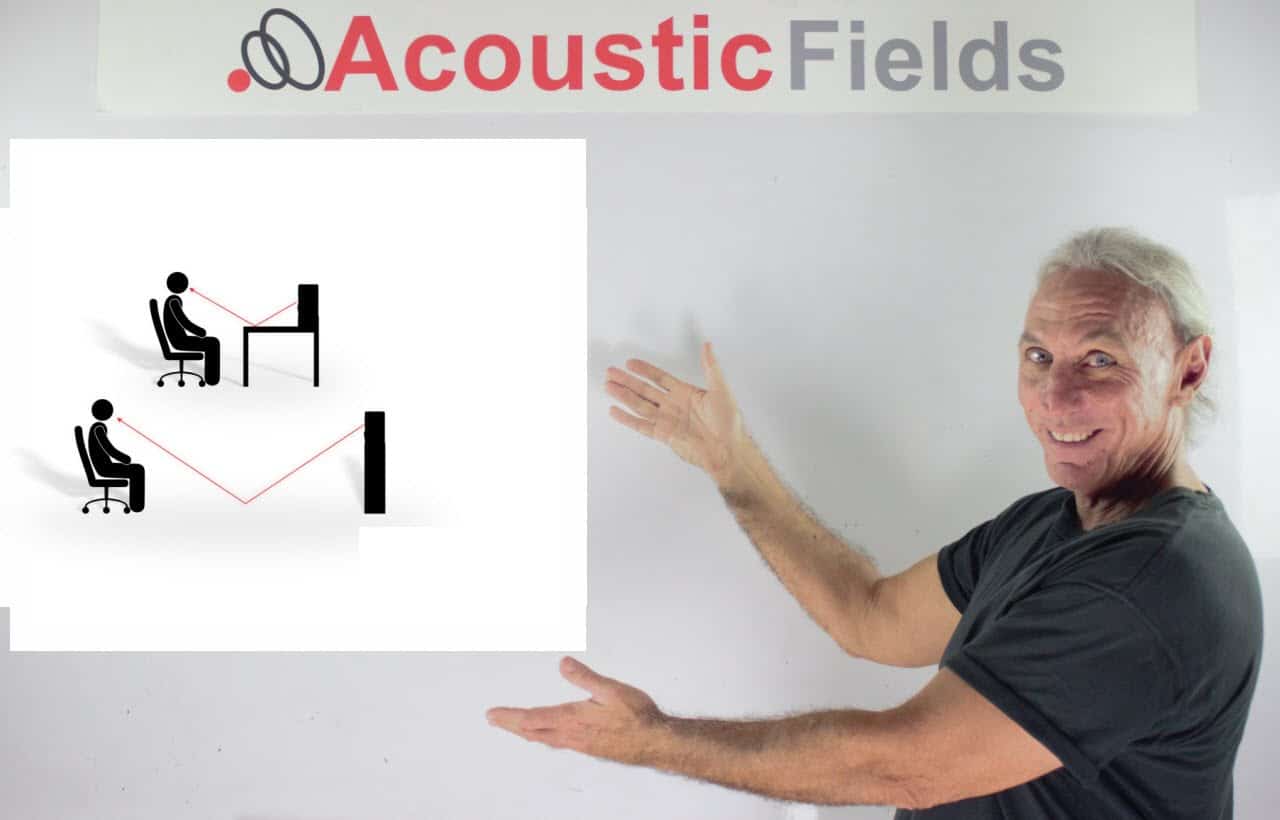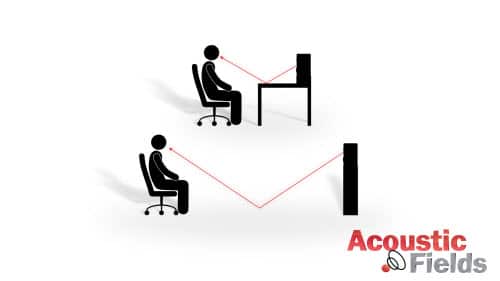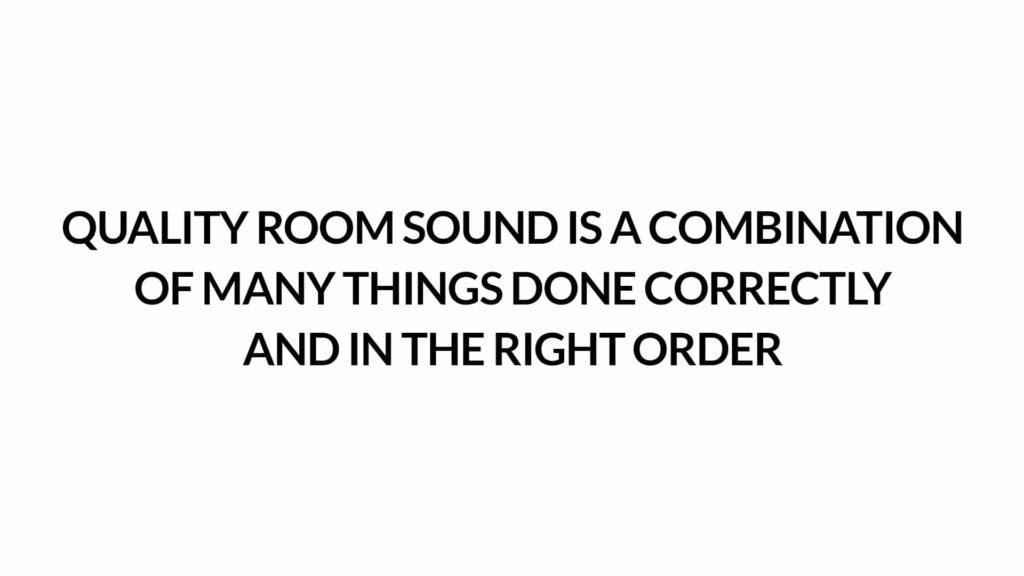Today we’re going to talk about comb filtering. What is it? Does it have a sound? Is it in our mixes? It is and we’re going to talk about why that is. What is the definition of comb filtering? It’s a series of reflections between two surfaces. It can be reflections off your console against us and back to the console. It could be a whole series. It can be a series of reflections from floor to ceiling.
So any boundary surfaces close by, far apart can create what’s called a comb filter. Why is it called a comb filter? Because if you look at it on an analyzer and on the screen, it has a series of teeth like a comb so that’s how it gets his name.
Speaker to console interaction
The main one I see a lot of in inquiries that we get is that speaker to console interaction. Most of the examples we see is we have monitor sitting on the console. So that first reflection point is off the console. So I want you to do a little test. So you don’t have to take my word for it, you can hear the audible distortion yourself.
Take a 2-inch piece of foam and lay it across your console. If you don’t have a 2-inch piece of foam, call me, I’ll send you one, okay? So let’s lay that across the console, sit back in your normal listening position and listen. Tell me if you hear a difference. You will hear a huge difference. That distortion is in your mixes. Mixes are just like room sound. It’s a combination of doing a lot of little things correctly in the right order. And having a speaker to console, comb filter interaction in your mixes, I don’t know of any engineer that would want that. I wouldn’t want it in my room. They’re not allowed in my room.
Experiment time
So try a little experiment, lay a 2-inch piece across the console, do some listening, sit back in your chair and do some listening, pull the foam back. Pull the foam halfway so it’s just covering the right channel listen to the differences. It’s huge especially from 125 cycles to about 400, right in the middle frequency ranges which we just don’t want to have happen.
So here’s another one, the monitor screen, I see a lot of monitor screens are a lot of screens between the two monitors. So put your foam across that. Perform the same listening test. Put your foam across the console, perform the listening test. Both places over the monitor screen, over the console, try both different alternating in each one. You’ll hear huge differences in the middle frequencies and those are audible distortions and I know you don’t want them in your mix.
So in summary, we see in the following graphic that a comb filter is really a reflection that goes back and forth between two boundary surfaces and in this graphic you can see the console causing the comb filter reflection.
And in the following graphic we realize that good quality room sound is a combination of doing a little thing right and the right order.
Is a comb filter a major problem in studios? No, but when you add it together to a lot of other variables you can understand the issue here.
In Summary
To learn more about room acoustics please sign up to download our free ebooks and video series on room acoustics here. And please let me know if you have any questions at any time.
Thanks
Dennis Foley









